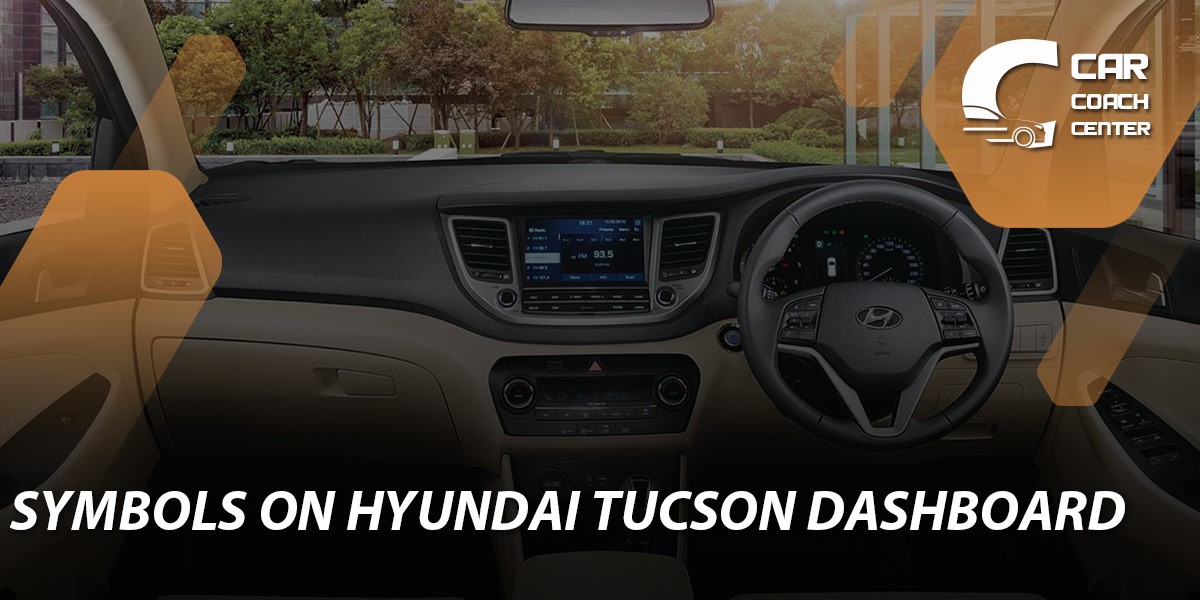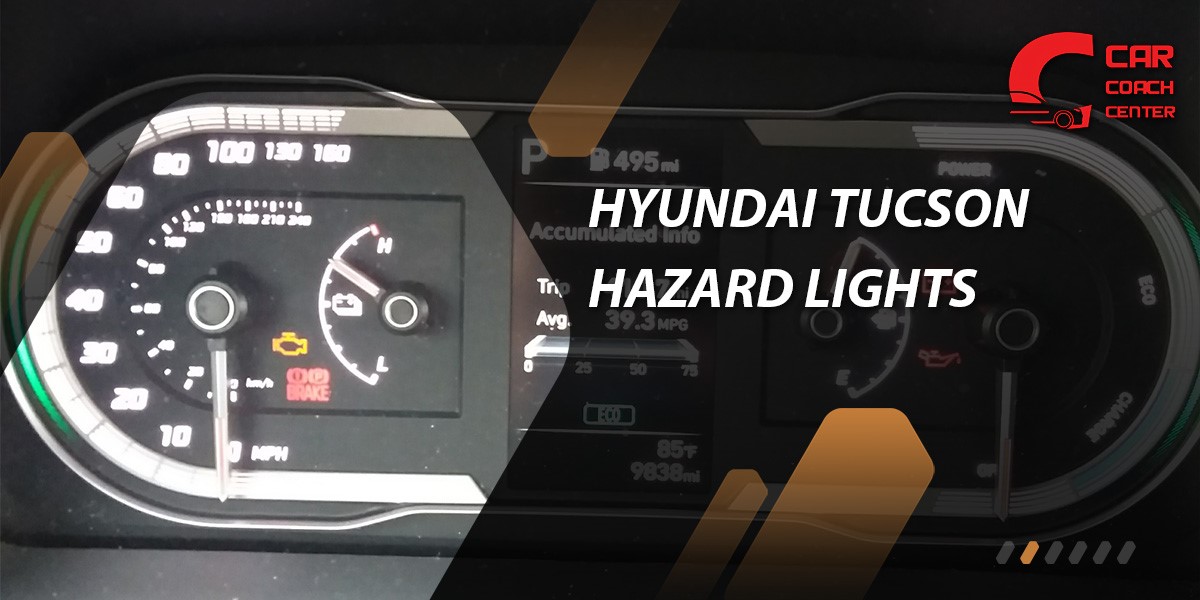Hyundai Tucson Warning Symbols
Welcome to CarCouchCenter.com, where we embark on an enlightening journey through the fascinating realm of Hyundai Tucson warning symbols. As automotive technology advances, modern vehicles are equipped with sophisticated safety features, each accompanied by a unique set of dashboard icons. The Hyundai Tucson is an exemplary model, boasting various warning symbols designed to alert drivers to potential issues and ensure a safe driving experience.

However, these cryptic symbols often leave drivers needing clarification about their vehicle’s well-being. Fear not, for we will be your trusty guide in this article, unraveling the enigmatic language of Hyundai Tucson’s warning system. By delving into the meanings and implications behind these icons, we aim to empower novice and seasoned drivers alike to comprehend and respond confidently to any warning their Tucson may present. So, let’s embark on this knowledge-packed adventure, unveiling the hidden messages that lie beyond the dashboard!
Decoding the Enigmatic: A Guide to Hyundai Tucson Warning Symbols
When you sit behind the wheel of your Hyundai Tucson, the dashboard lights up with an intricate display of warning symbols, each carrying crucial information about your vehicle’s health. Understanding these enigmatic symbols is essential for ensuring your safety and preventing potential issues from escalating. This comprehensive guide will shed light on some of the most common warning symbols found in the Hyundai Tucson, unraveling their meanings and implications.
Tire Pressure Warning
One of the most frequent warning symbols that drivers encounter is the tire pressure indicator. This symbol resembles an exclamation mark inside a U-shaped bracket and signals low tire pressure. Ignoring this warning can lead to reduced fuel efficiency, compromised handling, and even the risk of a blowout. We’ll explore how to correctly check and adjust tire pressure to keep your Tucson running smoothly.
Engine Temperature Warning
The engine temperature warning symbol, typically depicted as a thermometer submerged in water, alerts you to overheating issues. Driving with an overheated engine can cause severe damage and lead to costly repairs. Discover the potential causes of overheating and the immediate steps you should take when this warning appears.
Battery Charge Warning
The battery charge warning light, resembling a battery-shaped icon, warns you about a potential issue with your vehicle’s charging system. If your battery is not charging correctly, it can result in a stalled car and leave you stranded. We’ll investigate the reasons behind this warning and how to troubleshoot battery-related problems.
ABS Warning
The Anti-Lock Braking System (ABS) warning light, usually displaying the letters “ABS,” is a crucial safety feature that prevents wheels from locking up during sudden braking, especially on slippery surfaces. Understanding why this warning illuminates and what it means for your braking system is vital to maintaining optimum stopping performance.
Check Engine Light
The infamous “Check Engine” light can be anxiety-inducing, indicating a potential issue with various engine components. We’ll guide you through the steps to diagnose the problem and differentiate between minor glitches and serious malfunctions.
Airbag System Warning
The airbag system warning light, depicting an inflated airbag, demands immediate attention as it relates to the effectiveness of your vehicle’s safety restraint system. We’ll explain why this warning might appear and the necessary precautions to ensure your airbags function as intended in case of an accident.

When the Dashboard Speaks: Understanding Hyundai Tucson’s Warning Icons
As you embark on your daily journeys with your Hyundai Tucson, the dashboard becomes your faithful companion, communicating vital information through warning icons. These symbols are like silent messengers, notifying you of potential issues or system malfunctions that require your attention.
Understanding these warning icons is crucial for maintaining your vehicle’s health and ensuring a safe driving experience. In this section, we will explore some of the most common warning icons found in the Hyundai Tucson, empowering you to interpret their messages accurately.
Oil Pressure Warning
The oil pressure warning light, shaped like an oil can, signifies a drop in oil pressure within your engine. This warning demands immediate action, as low oil pressure can lead to engine damage and reduced performance. We’ll delve into the possible causes of low oil pressure and the steps to take when this icon illuminates.
Brake System Warning
The brake system warning light, often depicting an exclamation mark inside a circle within parentheses, indicates potential issues with your vehicle’s braking system. Understanding this warning is essential, as it relates directly to your safety on the road. We’ll explore why this warning might appear and how to address brake-related concerns.
Electronic Stability Control (ESC) Warning
The ESC warning light, represented by a car with wavy lines beneath it, pertains to your vehicle’s electronic stability control system. ESC is designed to enhance stability and traction during challenging driving conditions. We’ll explain the significance of this warning and how it affects your vehicle’s handling and stability.
Transmission Temperature Warning
The transmission temperature warning symbol, often resembling a thermometer within gears, alerts you to potential overheating in your vehicle’s transmission system. This warning warrants immediate attention, as transmission issues can be costly and may lead to drivability problems. We’ll uncover the possible causes of transmission overheating and the appropriate steps to take when confronted with this warning.
Adaptive Cruise Control (ACC) Warning
The ACC warning light, displaying a car with speedometer lines, is specific to Hyundai Tucson models equipped with adaptive cruise control. Understanding this warning is vital for those utilizing this advanced driver-assistance system. We’ll explore why this warning might activate and the implications for your vehicle’s adaptive cruise control functionality.
Lane Departure Warning (LDW) System
For Tucson models with lane departure warning systems, the LDW warning light, represented by a road with arrow markings, serves as a reminder of unintentional lane drifting. We’ll discuss how this system works and how to effectively interpret and respond to this warning.

Lights, Icons, Action! Exploring the Meaning Behind Hyundai Tucson’s Dashboard Warnings
Your Hyundai Tucson’s dashboard is a canvas of lights and icons, each with a unique purpose—communicating the health and status of various vehicle systems. These warning lights are designed to catch your attention and prompt immediate action when necessary. In this section, we embark on an illuminating journey, deciphering the meanings behind your Hyundai Tucson dashboard warnings.
Check Engine Light
Arguably the most perplexing dashboard warning, the check engine light, often depicted as an engine-shaped icon, can trigger anxiety among drivers. This warning signifies a potential vehicle engine or emissions system issue. We’ll explore the various reasons why the check engine light might illuminate, from minor issues like a loose gas cap to more significant concerns that demand professional diagnosis and repair.
Battery Indicator
The battery indicator, represented by a battery-shaped icon, informs you about your car’s charging system’s health. A lit battery light could indicate a weak battery, a faulty alternator, or a loose connection. We’ll guide you through the steps to determine the cause and whether it’s safe to continue driving or requires immediate attention.
Oil Pressure Warning
The oil pressure warning light, resembling an oil can, indicates low oil pressure within the engine. Driving with insufficient oil pressure can lead to severe engine damage. We’ll explore the significance of this warning and what to do if you encounter it on your dashboard.
Tire Pressure Monitoring System (TPMS) Warning
The TPMS warning light, typically displaying an exclamation mark inside a tire, alerts you to low tire pressure in one or more of your vehicle’s tires. Ignoring this warning could compromise your safety on the road and result in reduced fuel efficiency. We’ll discuss the importance of maintaining proper tire pressure and how to address this warning.
Brake System Warning
The brake system warning light, often represented by an exclamation mark inside a circle, demands attention to your vehicle’s braking system. Whether it’s an issue with the brake fluid, brake pads, or the ABS, we’ll explore the potential causes of this warning and the necessary steps to ensure your braking system’s optimal performance.
Electronic Stability Control (ESC) Indicator
The ESC indicator, displaying a car with wavy lines beneath it, relates to your vehicle’s electronic stability control system. This feature enhances stability and traction during challenging driving conditions. We’ll discuss how the ESC system works and why this warning might illuminate.
Don’t Panic! How to Respond to Common Hyundai Tucson Warning Symbols
Encountering warning symbols on your Hyundai Tucson’s dashboard can be unnerving, but it’s essential not to panic. These warning symbols are your car’s way of communicating with you, prompting you to take action and address potential issues promptly. In this section, we’ll guide you on how to respond calmly and effectively to some of the most common Hyundai Tucson warning symbols, ensuring you confidently handle each situation.
Tire Pressure Monitoring System (TPMS) Warning
When the TPMS warning light appears, indicating low tire pressure, don’t ignore it. Instead, find a safe spot to pull over and check the tire pressure in all four tires, including the spare. Inflate any underinflated tires to the recommended pressure, usually found in your vehicle’s owner’s manual or on a sticker inside the driver’s door jamb. If the light persists after inflating the tires, it could indicate a puncture or leak, necessitating a professional inspection.
Check Engine Light
The check engine light can be triggered by various issues, ranging from minor to more significant problems. If the light is steady and your vehicle is performing normally, you can continue driving but should schedule a visit to a mechanic for diagnosis. However, if the check engine light is flashing, it indicates a severe problem that requires immediate attention. Pull over safely, turn off the engine, and avoid driving until the issue is resolved to prevent further damage.
Battery Indicator
When the battery indicator light illuminates, it signals a potential issue with your car’s charging system. Check if the battery terminals are securely connected, and if you have a voltmeter, verify the battery’s voltage. If the voltage is significantly low, your battery might need replacement. In other cases, it could be an alternator or charging system problem requiring professional assistance.

Oil Pressure Warning
Pull over and turn off the engine immediately if the oil pressure warning light comes on while driving. Low oil pressure can lead to engine damage. Check the oil level and add oil if necessary. If the oil level is adequate, do not attempt to restart the engine and seek professional help to diagnose and resolve the issue.
Brake System Warning
If the brake system warning light illuminates, check your parking brake to ensure it is fully released. If the light persists, it could indicate a leak or low brake fluid level. Avoid driving and have your brake system inspected by a qualified mechanic as soon as possible.
Airbag System Warning
The airbag system warning light indicates a potential issue with your vehicle’s safety restraint system. While attempting to diagnose or repair the airbag system yourself is unsafe, schedule an appointment with an authorized service center to have the system inspected and repaired.
The Hidden Language of Safety: Unraveling Hyundai Tucson’s Dashboard Symbols
As you embark on your adventures with your Hyundai Tucson, the dashboard becomes more than just a collection of lights and icons – it becomes a hidden language of safety. Behind each dashboard symbol lies a message your vehicle communicates, guiding you to maintain its health and ensure your safety on the road. In this section, we will delve into the intricacies of Hyundai Tucson’s dashboard symbols, decoding the hidden language that speaks volumes about your car’s well-being.
Symbol Clarity: Understanding the Icons
Hyundai Tucson’s dashboard symbols are designed with clarity and purpose. Each icon conveys critical information about specific systems or components in your vehicle. We’ll explore the most common symbols, from engine-related warnings to tire pressure indicators, shedding light on their meanings and implications. Understanding these icons empowers you to recognize potential issues promptly, allowing for timely intervention and preventive maintenance.
Prioritizing Safety: The Importance of Warning Symbols
The primary purpose of dashboard warning symbols is to prioritize your safety and the well-being of your passengers. Ignoring these warnings can lead to costly repairs, compromised performance, or even dangerous situations on the road. By unveiling the hidden language of these symbols, you’ll become better equipped to respond appropriately when your Hyundai Tucson communicates its needs.
Empowering the Driver: Taking Proactive Measures
Knowledge is power, and understanding the hidden language of safety within your Hyundai Tucson’s dashboard empowers you as a driver. Beyond mere panic-inducing indicators, these symbols act as proactive messengers, prompting you to take preventive measures and address potential issues before they escalate.
We’ll provide essential tips and best practices for interpreting and responding to these symbols, enabling you to make informed decisions about your vehicle’s maintenance and care.
Recognizing the Silent Guardians: Advanced Safety Systems
In recent years, automotive technology has seen remarkable advancements, equipping vehicles with advanced safety systems that work silently to protect you and your loved ones. Hyundai Tucson is no exception, boasting cutting-edge safety features. In this section, we’ll explore the symbols related to these advanced systems, such as lane departure warning, adaptive cruise control, and blind-spot monitoring, uncovering how they contribute to your overall safety.
Preventive Maintenance: The Key to a Smooth Ride
Understanding the hidden language of your Hyundai Tucson’s dashboard symbols isn’t just about reacting to warnings; it’s also about preventing issues altogether. Regular maintenance is essential for keeping your vehicle in top shape. We’ll emphasize the significance of scheduled maintenance and share valuable insights on how a well-maintained vehicle ensures your safety and enhances its longevity and performance.
Beyond the Dash: Taking a Closer Look at Hyundai Tucson’s Warning System
While the dashboard serves as the primary interface for Hyundai Tucson’s warning system, there is more to this sophisticated safety network than meets the eye. Beyond the familiar icons and lights lies a robust and intricate warning system designed to keep you informed and protected on the road. In this section, we will look closer at Hyundai Tucson’s warning system, exploring its inner workings and the technology underpinning its effectiveness.
Sensors and Data: The Guardians of Awareness
At the heart of the Hyundai Tucson’s warning system are numerous sensors strategically placed throughout the vehicle. These sensors continuously monitor various parameters, such as engine performance, tire pressure, braking dynamics, and vehicle stability.
They collect real-time data, enabling the warning system to detect anomalies and potential issues as they arise. We’ll delve into the role of these sensors and how they work in unison to enhance your driving experience and safety.
Centralized Control: The Brain of the Operation
Behind the scenes, a centralized control unit processes the data received from the sensors, analyzing the information to determine whether any warning is warranted. This electronic brain is the decision-maker, triggering warning lights and symbols to detect abnormal conditions or potential safety risks. Understanding the central role of this control unit provides insight into the system’s responsiveness and accuracy.
Preparing for the Unexpected: Proactive Safety Features
In addition to warning symbols, Hyundai Tucson’s advanced warning system incorporates proactive safety features to mitigate potential accidents. Features like forward collision warning, lane-keeping assist, and automatic emergency braking are part of the broader advanced driver-assistance systems (ADAS) suite. We’ll explore how these features work together, providing extra protection to prevent accidents and keep you safe on the road.
User Interface: Customization and Interaction
Modern vehicles, including the Hyundai Tucson, offer various ways for drivers to interact with the warning system and customize their preferences. Some vehicles allow users to adjust the sensitivity of certain warning alerts or customize the type of information displayed on the instrument cluster. We’ll discuss the importance of understanding and utilizing these user interface options to optimize the warning system to your specific needs and driving style.
Staying Current: Software Updates and Recalls
To ensure the optimal performance of your Hyundai Tucson’s warning system, it’s essential to stay up-to-date with software updates and recalls. Manufacturers release updates to address potential software glitches or enhance system capabilities. We’ll guide you on how to check for and apply these updates, helping you maintain a cutting-edge warning system that operates at its best.
As we conclude our exploration of the Hyundai Tucson’s warning system, we aim to illuminate the intricate mechanisms beyond the dashboard. Understanding the inner workings of this system not only fosters a deeper appreciation for automotive engineering and empowers you as a driver, ensuring that you can confidently rely on the warning system to keep you informed and safe during every journey with your Hyundai Tucson.
conclusion
In conclusion, exploring the Hyundai Tucson’s warning symbols goes beyond simply deciphering dashboard icons; it entails understanding the hidden language of safety and the intricacies of the vehicle’s warning system. As we navigated through this informative journey, we unveiled these warning symbols’ crucial role in safeguarding drivers and passengers alike.
The Hyundai Tucson’s advanced warning system, with its sensors, centralized control, and proactive safety features, acts as a vigilant guardian, providing real-time data and timely alerts to ensure a secure driving experience. By familiarizing ourselves with the meanings and implications of these symbols, we empower ourselves to respond confidently to any warning our Tucson may present, preventing potential issues and promoting proactive maintenance. As you embark on your automotive adventures, visit CarCouchCenter.com for more insightful articles and stay informed, ensuring your Hyundai Tucson remains a reliable and safe companion.
What does the check engine light in my Hyundai Tucson indicate?
The check engine light indicates a potential issue with the vehicle's engine or emissions system.
Why is the battery indicator on my dashboard lit?
The battery indicator typically indicates a problem with your car's charging system, such as a weak battery or a faulty alternator.
What should I do when the tire pressure warning light comes on?
When the tire pressure warning light illuminates, check the tire pressure in all four tires and inflate them to the recommended levels if necessary.


